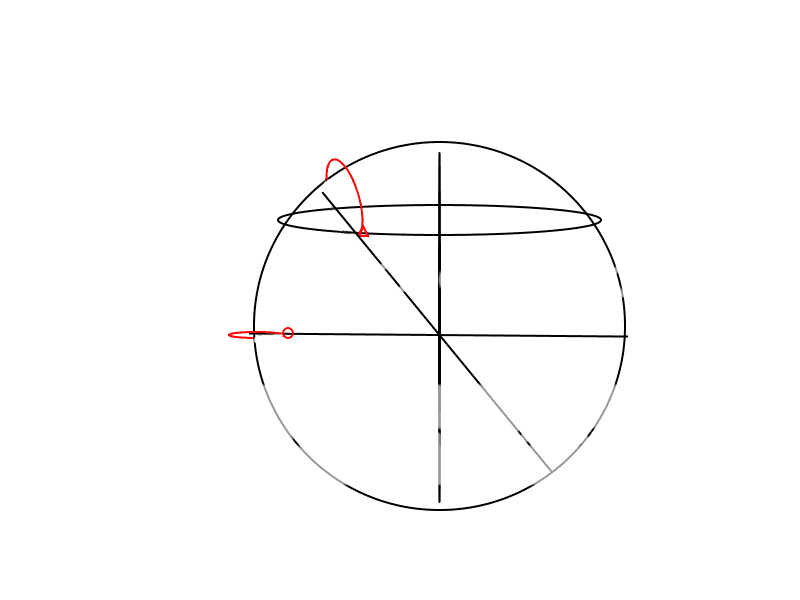The horizontal component of coriolis in an east west line of sight happens in exactly the same way as it does north/south and is not any harder to explain...it is still due to rotation, and in my opinion even easier to visualize. I caught the snarky shooter reference, but the jokes on you because I understand exactly how coriolis behaves, though not how the various ballistic tools choose to address it. I think I can help though, as usual it is a matter of perspective...
I think it may seem harder to visualize because you are trying to imagine it from the same vantage point as the north south example which you understand. Start there: When you imagine a north/south shot, you probably assume the vantage point of looking at the globe from the "side", level with the equator with the north pole on top and south pole on bottom. It is very easy to see how a shot straight south from some northern latitude towards the equator would appear to bend right as the target rotates away from it. If you shoot north, it takes only a little more imagination to see that the bullet starts with more tangential velocity than more northern target, and again drifts right relative to the slower rotating target.
The problem with east/west shots is that you are likely trying to imagine the shot from the same vantage point you used for the north/south visualization. What you need to do is look at the east west example from the vantage point of hovering above the poles. For some reason people never seem to imagine that viewpoint, perhaps because we learn geography from two dimensional maps...people forget that it is shorter to go to russia over the pole...anyway I digress. Think of yourself looking down at the globe from over the north pole. Looking at the earth from over the north pole, the earth looks like a circle, the equator is the outer edge. From the north pole, the earth rotates counter clockwise. With the pole as the center of the circle, any point the same distance from the pole is on the same latitude. Illustrate it yourself, its easy. Draw a circle on a piece of paper, and pick two points the same distance from the center (the pole), make two dots the same distance out, one is the shooter position the other the target. If they are the same distance from the pole, they are the same latitude, and therefore directly east and west of each other. Lay your pencil across the two points, as if it were the path of the bullet, and Hold it still while you rotate the circle counterclockwise around the pole. Watch how the target rotates out from under the pencil to the left, which has the effect of causing the shot to miss right. Imagine the shot going the other direction...same thing, the target rotates left. For the southern hemisphere youd need to rotate the circle clockwise, which causes the target to rotate out to the right, making the shot appear to drift left.
Another way to visualize it is the east west shot is exactly like tossing a ball to someone on a merry go round who is the same distance from the center that you are. The north south shot is like throwing a ball from the edge to the center, or from the center to the edge.
I still dont think the discussion has much to do with hitting real world targets with small arms but it is fun to consider, and if I had confidence the solvers were giving me the correct magnitude and the interface was easy it might as well be done.
What if I told you that your bullet was not taking the shortest path to the target except on pure north/south shots....would that blow your mind???? On earth, the shortest distance between two points that are east/west of each other is NOT a straight line, but that is another discussion I suppose...






